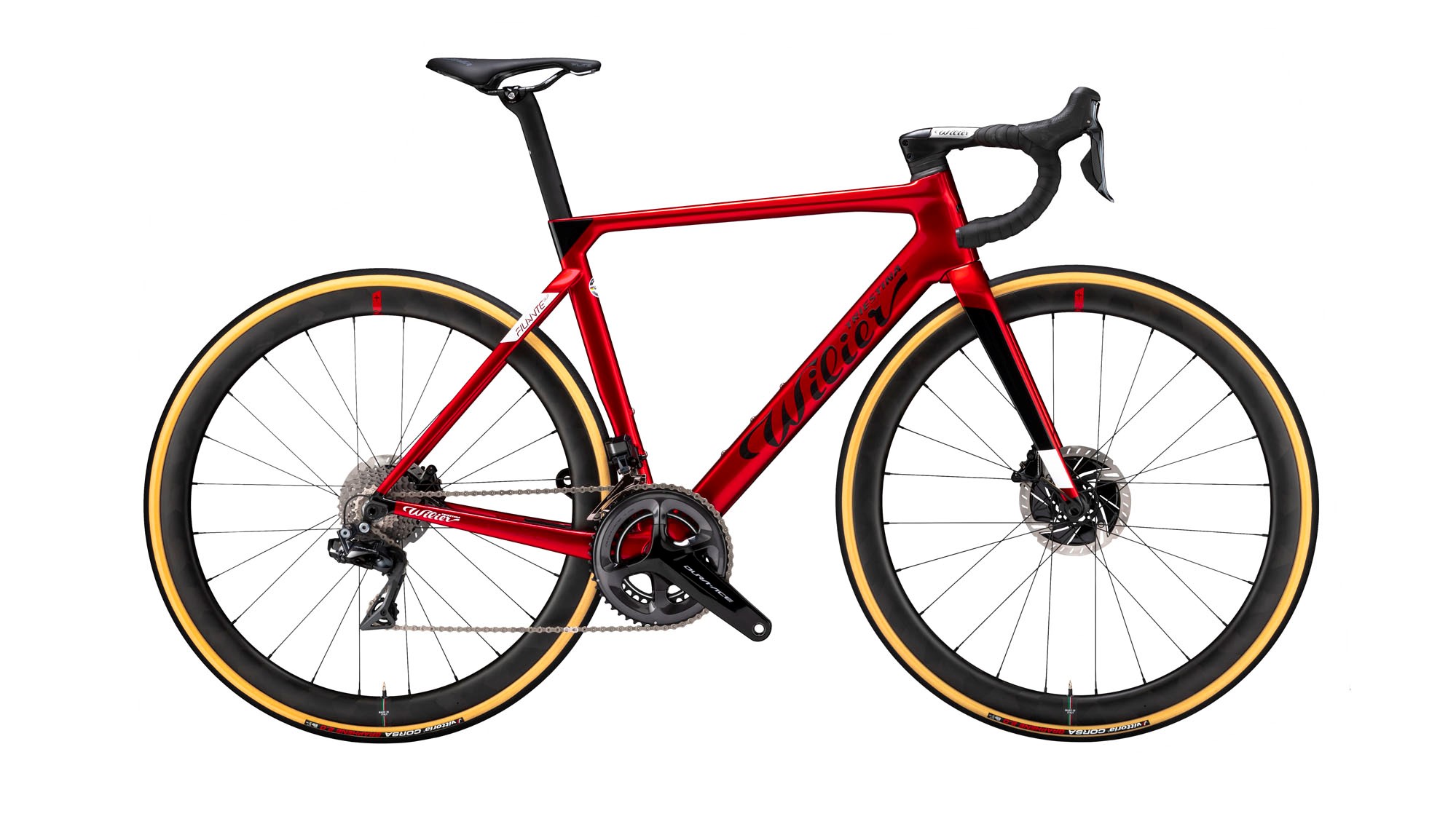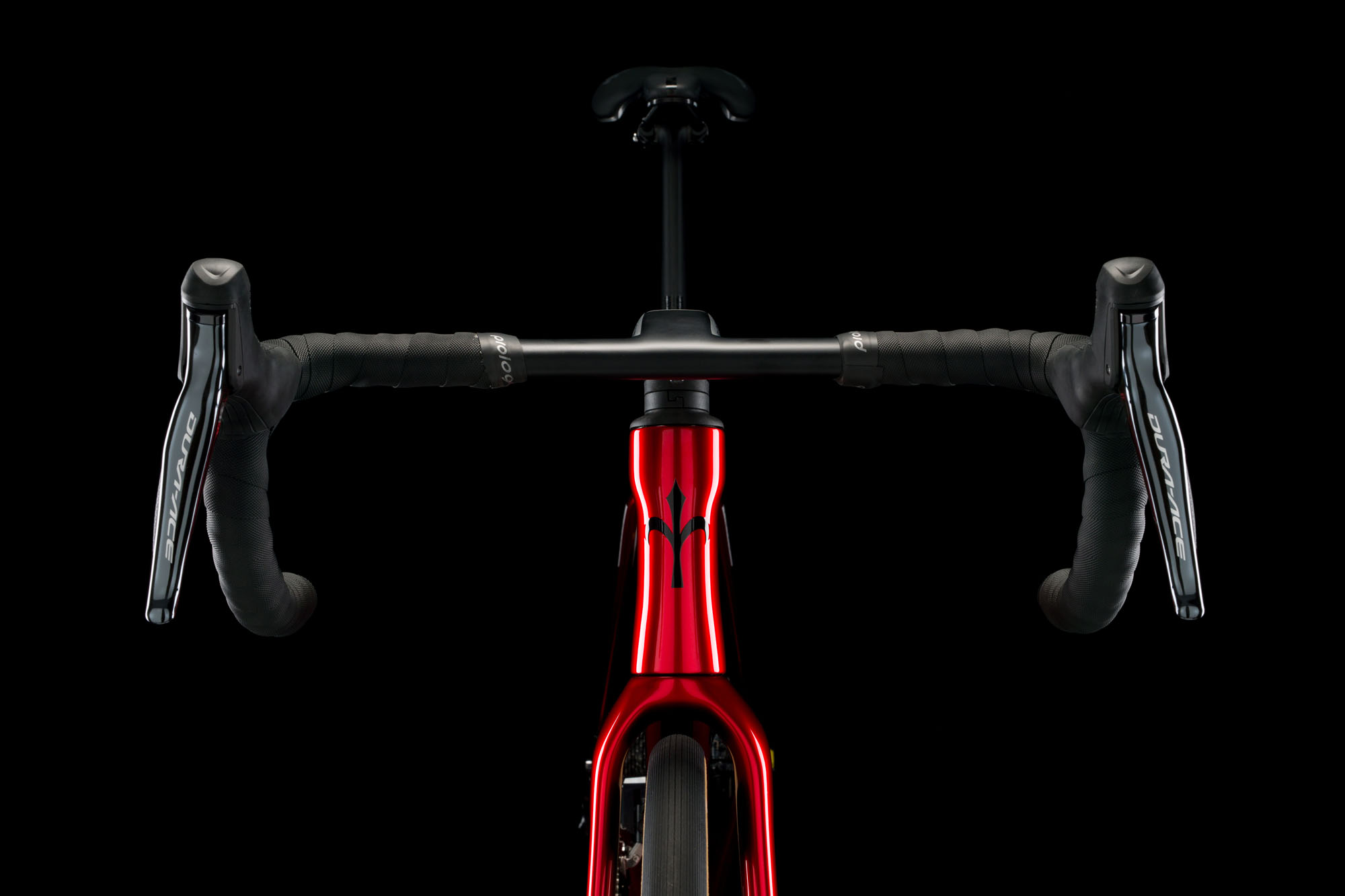Wilier launches new Filante: a 'real-world' aero bike
Filante has softer frame corners, to make you faster around real world corners

Wilier has introduced a new aero frame to its road bike range, the Filante SLR, which will be positioned close to the Zero SLR in the Wilier road bike lineup.
This new bike is the latest chapter in a storied history of aero frames for Wilier. A decade ago, it launched the Imperiale. Thereafter it was the Cento 1 Air, in 2013, which introduced NACA airfoils and a truncated tail.
Wilier’s design ambition with the new Filante is to deliver an outstanding aero package, at the weight approaching that of its Cento10 Pro. Featuring subtle rounding at many of its aero junctions, the Filante uses slightly less overall material to construct its frame compared to a Cento10 Pro’s angular form.
At a frame weight of 870g, the Filante is inarguably light, without compromising Wilier’s compliance.
Faster for all riders
The company’s engineers, industrial designers and aerodynamicists went beyond the wind tunnel for Filante’s development. Recognising that real-world riding conditions have crosswinds and peculiar turbulence flow when rounding corners or riding in a group, Wilier has softened some of the frame's surfacing.
Filante retains the signature NACA airfoil and Kammtail carving at the top of the seat tube. Wilier has designed a custom bearing for the headset too, allowing internal cable routing without an oversized head tube. The perfectly round Filante head tube has a narrower profile than most D-shaped rivals.
Compared to a Cento10, the Filante has slightly softer angles on some of its key aero features and a 7mm wider fork. Like other Wilier frames, the Filante’s fork legs are generously spread, not only to allow greater tyre choice but primarily to reduce spoke turbulence and improve aerodynamics.
Get The Leadout Newsletter
The latest race content, interviews, features, reviews and expert buying guides, direct to your inbox!

The broad fork structure purposefully aligns with the rear triangle’s outer dimensions, to create a harmonizing aero profile. Balancing the influence of a disc brake used at full braking power, the Filante’s fork is asymmetric in its material composition. This is an adaptation of the asymmetric rear triangle design that Willier has been using for years to compensate for drivetrain forces.
Offering six frame sizes, with five handlebar dimensions, Wilier promises to deliver a similar riding feel across all its Filante frames, regardless of size. This is achieved by meticulously using different tube dimensions for each size.
For those intending to curate their own Filante SLR build, the frameset (with a handlebar and seatpost) retails for €5,000.
The most affordable Filante SLR factory build is equipped with Shimano’s Ultegra Di2 8070 groupset and rolls RS170 specification wheels, also from the Japanese brand, at €7,200. Upgrade to Dura-Ace Di2 9170 and Wilier ULT38KT wheels, with CeramicSpeed bearings, and you’ll pay €11,300. Want the frame and that wheelset, with SRAM’s eTap AXS? That will be €11,400.
Those riders who believe that an Italian road bike should always be finished in Campagnolo, there are two Super Record EPS builds, at €12,400 (Bora WTO 33 wheels) and €11,200 (rolling Shamal C21s).
Lance Branquinho is a Namibian born media professional, with 15-years of experience in technology and engineering journalism covering anything with wheels. Being from Namibia, he knows a good gravel road when he sees one, and he has raced some of Africa’s best-known mountain bike stage races, such as Wines2Wales and Berg&Bush.